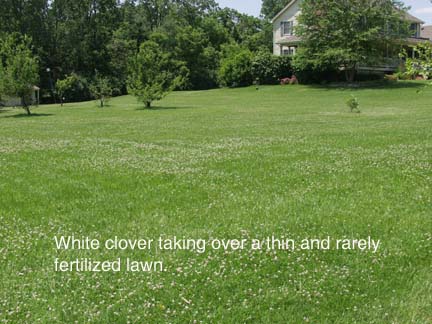The small white flowers of white clover are very visible right now and it may appear that clover is taking over, especially under-fertilized turf areas. Clover is a legume and is very competitive under low N conditions, so increasing annual N is best method for long-term control. The temptation is to apply a herbicide now to control clover, but unfortunately applications during warm weather can cause damage to turf while providing less-than-effective control. The best overall method for controlling clover is to increase your annual fertilization. This combined with an application a broadleaf herbicide in mid-October should minimize many of the clover problems. Herbicides applied now are not as effective as fall applications, but control is adequate to justify applications made by professionals now. However, insure that the clover and grass are well-watered and not under stress. Avoid making herbicide applications when temperatures are above 80oF because turf burn is likely and control will be less effective. Our studies have found Drive or any product containing clopyralid to be most effective on clover, but 2,4-D alone will not control clover effectively. Be sure to read the label on your specific clopyralid-containing product because many of these cannot be used on homelawns. Many products can burn creeping bentgrass in the heat of summer, but Lontrel appears to be the safest for bentgrass. Spotlight, which is Dow’s new replacement for clopyralid in lawns, will also control clover. Be sure to tankmix spotlight with 2,4-D and/or other broadleaf products to expand the number of weeds controlled. Also realize applications made now will have to be followed up with fall applications for best control.
 |